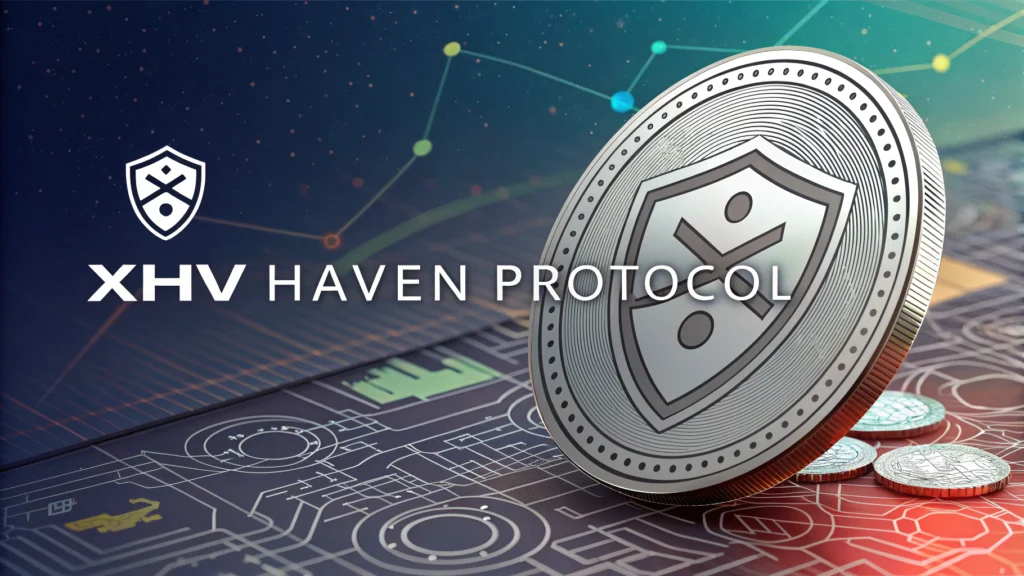In a cryptocurrency landscape dominated by transparent ledgers and regulatory scrutiny, Haven Protocol (XHV) stands out as a unique project merging privacy with stability. Built on Monero’s foundational privacy tech, Haven enables users to mint and trade private, stable-value assets (like xUSD, xEUR, or xGOLD) while maintaining untraceability. This article explores Haven’s mechanics, use cases, and challenges in the evolving world of decentralized finance (DeFi).
1. Core Features: Privacy Meets Stability
Haven Protocol is a privacy-first blockchain designed to create off-shore-style “vaults” for storing and transferring wealth anonymously. Key innovations include:
- Private Stable Assets: Users mint stablecoins (e.g., xUSD) by locking XHV, Haven’s native token, as collateral. These assets retain a 1:1 peg to real-world equivalents but are fully private.
- Monero-Inherited Privacy: Leverages Monero’s ring signatures, stealth addresses, and RingCT to anonymize transactions.
- Decentralized Exchange (DEX): Built-in atomic swaps allow users to trade XHV for stable assets without third-party intermediaries.
2. How It Works: Mint, Redeem, and Shield
- Minting: Users lock XHV into a smart contract to mint stable assets like xUSD. The system uses overcollateralization to maintain stability (similar to MakerDAO’s DAI).
- Redeeming: Burn stable assets to reclaim XHV at the current collateral ratio.
- Shielding: All transactions are private by default, masking amounts, senders, and recipients.
3. Use Cases: Financial Privacy Redefined
- Hedge Against Inflation: Users in hyperinflationary economies (e.g., Venezuela, Argentina) can store wealth in stable assets like xUSD or xGOLD.
- Censorship-Resistant Remittances: Send funds across borders without exposing transaction details to governments or corporations.
- Private Savings: Shield savings from surveillance or capital controls.
4. Technology and Challenges
- XHV Token: The volatile native token acts as collateral and governance tool. Holders vote on protocol upgrades.
- Oracle System: A decentralized oracle network ensures accurate price feeds for pegged assets.
- Challenges:
- Regulatory Risks: Privacy + stablecoins attract intense regulatory scrutiny.
- Liquidity: Limited adoption compared to mainstream stablecoins (USDT, USDC).
- Complexity: Minting/redeeming requires technical understanding, deterring casual users.
5. Community and Development
- Decentralized Governance: Proposals are voted on by XHV holders, emphasizing community-driven evolution.
- Recent Updates: The 2023 “V2” upgrade introduced multi-asset support and improved DEX efficiency.
- Competition: Faces rivals like Secret Network (private smart contracts) and incumbents like Monero.
6. Future Outlook
Haven’s roadmap includes:
- Cross-Chain Swaps: Integrating with Ethereum and Bitcoin via atomic swaps.
- Expanded Assets: Adding commodities like xSILVER and xOIL.
- User-Friendly Interfaces: Simplifying minting/redeeming for mainstream adoption.
Conclusion: Who Should Use Haven Protocol?
Haven Protocol is ideal for users seeking financial privacy with stability. Its ability to mint private stable assets makes it a powerful tool for evading surveillance, capital controls, or inflation. However, its complexity and niche appeal mean it’s best suited for crypto-savvy individuals rather than casual users.
- Choose XHV if: You prioritize untraceable savings, distrust centralized stablecoins, or need censorship-resistant financial tools.
As regulators clamp down on privacy coins, Haven’s success hinges on balancing innovation with accessibility—a challenge that could define its place in the future of private finance.
Meta Description (150 characters):
“Haven Protocol (XHV) combines Monero’s privacy with private stablecoins like xUSD. Explore its minting mechanics, use cases, and regulatory challenges.”
